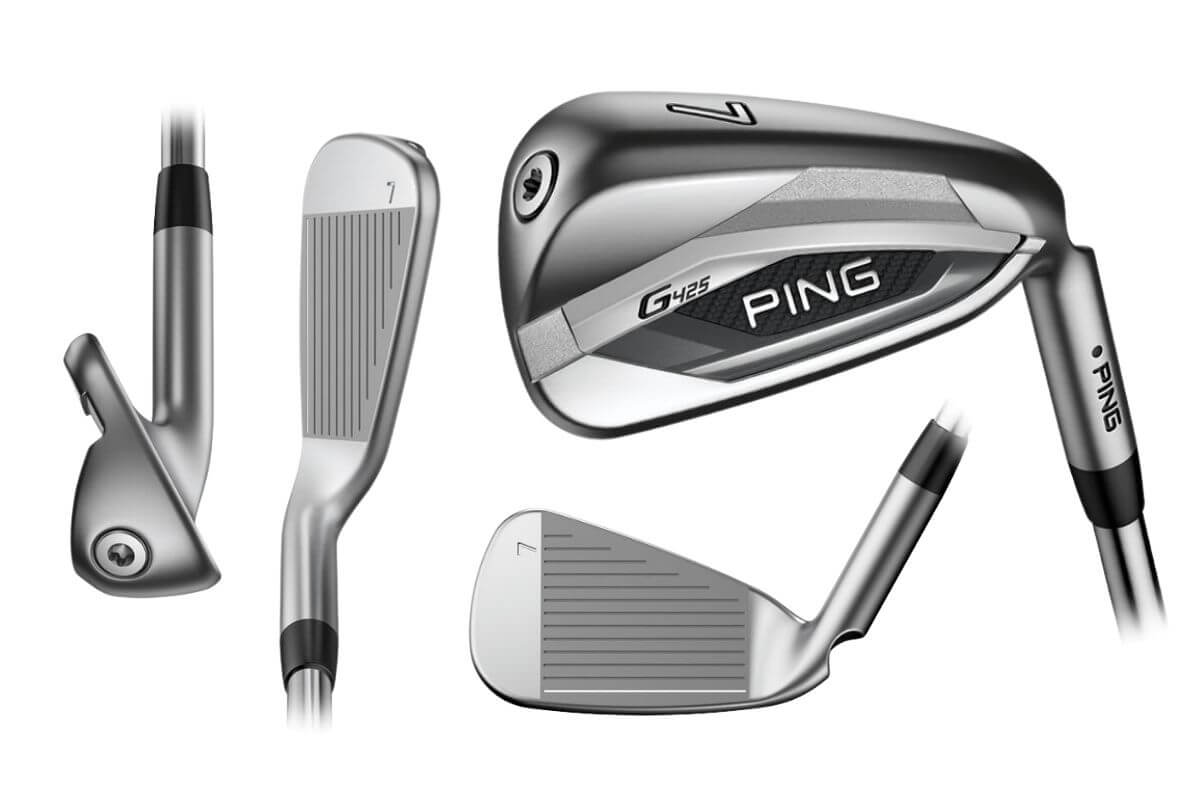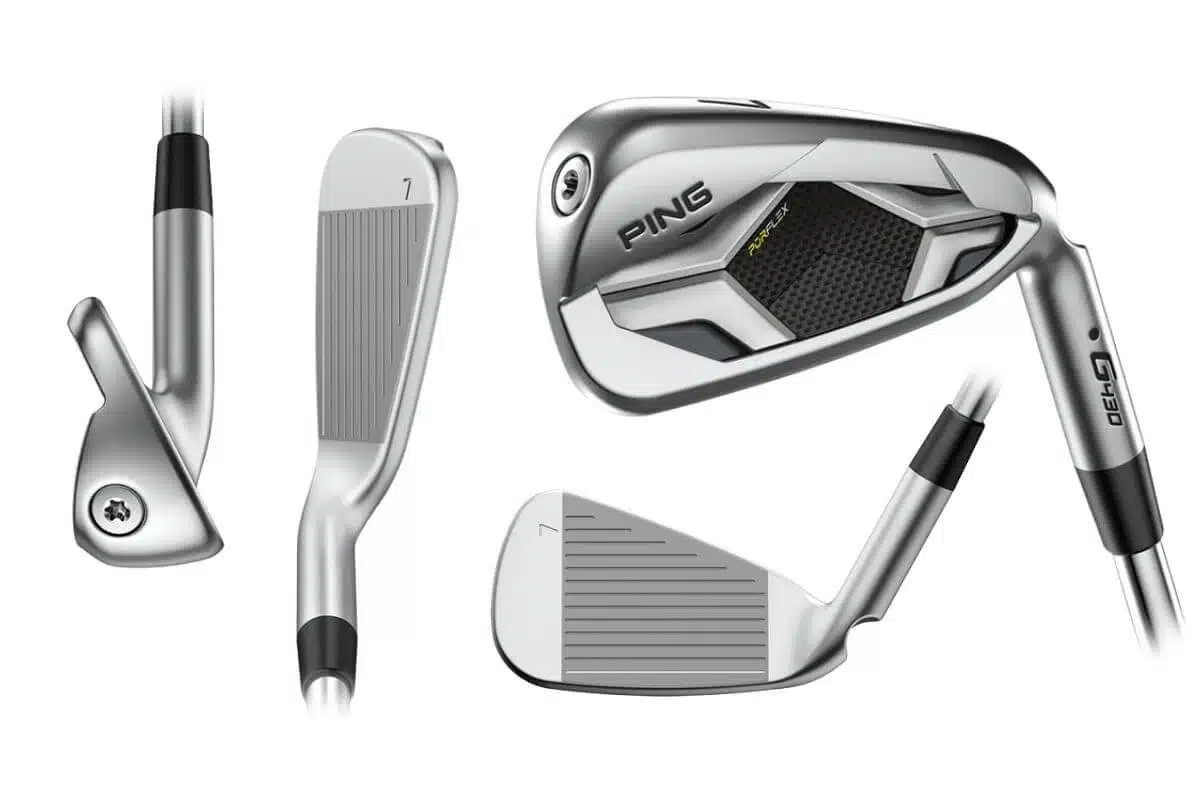Amateur golfers get endlessly bombarded with new gear and every big name brand seems to dangle a new range of clubs in front of us every year.
Callaway is no different, with the release of the PING G425 range closely followed by the release of the PING G430 clubs which have both garnered considerable attention for their advanced features and impressive performance.
So how do I decide whether it’s worth upgrading my G425 irons already?
What about if I’m in the market for new irons – do I save a bit and get the G425s or go all out for the newer tech of the G430s?
To help tackle these questions I’ve explored and tested both sets of irons, offering my thoughts and recommendations to help guide your decision.
Bridging the gap between forgiveness and performance, the PING G425 and G430 irons have raised the bar in terms of playability and distance.
Overall, both sets are high quality game improvement irons and would be well-suited to the bag of many golfers.
Table of contents
My top pick
After examining and testing the PING G425 and PING G430 irons, it’ is evident that’s clear both sets offer cutting-edge features and performance that cater to the needs of more than just average golfers seeking improvement in their game.
Each iron set presents unique advantages that can elevate your play on the course, such as high launch, great ball speed and optimum forgiveness.
Overall, the PING G430 irons seemed to be slightly faster in terms of ball speed and a little longer and softer off the clubface. For these reasons, I’d recommend the G430 as the better of the two, but if you can pick up a set of G425s a bit cheaper, they will definitely be a suitable, high-quality club for a wide range of players.
The decision ultimately comes down to your individual preferences and priorities, as well as your budget.
Both irons will do what the amateur golfer needs, offering great performance and reliability, while still being workable when needed.
Specifications compared
| Feature | PING G425 | PING G430 |
| Appearance | – Shorter blade length than G410 with higher MOI | – More compact shape with shorter hosel for lower CG |
| – Clean, compact design for an eye-pleasing address view | – Hydropearl 2.0 chrome finish for consistency from wet or dry grass | |
| Ball Speed | – Hyper 17-4 stainless steel face for fastest ball speed | – Proprietary heat-treating process for more flexing and higher ball speed |
| – Metal-wood-style design for higher and longer results | – Higher max height for better shot holding on the green | |
| Sound & Feel | – Multi-material cavity badge for superb feel and sound | – PerFlex Technology with seven flex zones for increased ball speed and solid feel |
| Forgiveness | – Tungsten toe screw and hosel weight for expanded MOI | – Tungsten toe and shaft tip weights for extreme MOI and clean turf interaction |
| – Resilient hydropearl chrome finish for improved wet play | – Approximately 1° of additional bounce for minimizing “heavy” shots and pure strikes |
Appearance and feel
Visual appeal
The PING G425 features a well-balanced design, with a slightly shorter blade length compared to its predecessor, the G410.
What truly stands out is the higher MOI (Moment of Inertia) in the G425, achieved through precise weight distribution.

This enhancement results in a head with exceptional stability, promoting a sense of confidence at address.
The clean and compact shape of the G425 further adds to its visual appeal, making it a preferred choice for golfers who value aesthetics.
Despite this, it did feel a tad ‘chunky’ for me, so be wary if you do like more of a ‘players iron’ look.
On the other hand, the PING G430 boasts a more compact profile, capturing attention with its refined look.
The shorter hosel in the G430 is strategically designed to lower the CG (Center of Gravity) and align it with the force line, which translates to increased ball speed and a more solid impact, especially on low-face strikes.

Additionally, the hydropearl 2.0 chrome finish ensures consistent performance even in challenging wet conditions, making the G430 a reliable companion in various weather conditions.
Feel upon impact
The feel of a golf club at impact plays a crucial role in a golfer’s confidence and performance.
The PING G425 is equipped with a multi-material cavity badge, a result of extensive finite element analysis.
This three-piece badge covers more of the face, effectively dampening undesirable frequencies for a superb feel and sound.
The G425 delivers a gratifying sensation upon striking the ball, but to be honest, it did not necessarily stand out from the crowd, despite the boasting from the manufacturer.
The PING G430 aims to take feel to a new level with its innovative PerFlex Technology.
Featuring seven ‘flex zones’, this technology allows for increased free bending, translating to higher ball speeds across the face and longer results.
Combined with a lower CG, the badge contributes to the G430’s solid feel and pleasing impact sound.
The G430 actually did feel a bit unique off the clubface and edges out the G425 in terms of softness.
Forgiveness
Forgiveness in the PING G425
The PING G425 iron set excels in forgiveness, making it a reliable choice for golfers seeking consistency and improved results.
A notable feature contributing to its forgiveness is the incorporation of a tungsten toe screw and hosel weight, which significantly expands the perimeter weighting.
This expanded weighting creates a new standard in forgiveness for an iron of its size, allowing golfers to experience enhanced stability and accuracy on off-center strikes.
Furthermore, the PING G425 boasts a resilient hydropearl chrome finish, aimed to repel moisture effectively.
I haven’t hit the G425 in wet conditions, but even a golf tech nerd like me finds this hard to believe – more likely marketing spin than anything I’d imagine.
Despite these claims, the shot dispersion and general grouping of the G430 was actually better.
Shot dispersion in the PING G430
The PING G430 irons demonstrate remarkably tight dispersion of shots, making it an exceptional option for golfers who seek forgiveness without compromising on performance.
Tungsten toe and shaft tip weights play a pivotal role in achieving an extreme MOI (Moment of Inertia) in the G430, resulting in enhanced stability throughout the swing and increased forgiveness on off-center hits.
Moreover, the PING G430 is designed with approximately 1° of additional bounce, ensuring clean turf interaction and pure strikes.
This design feature minimizes the occurrence of “heavy” shots that come up short, allowing golfers to maintain consistent distance and control even on mishits.
Performance
Ball speed in the PING G425
One of the standout features of the PING G425 is its impressive ball speed, although this wasn’t able to match that of the G430.
The G425’s exceptional ball speed not only provides added yardage off the tee but also contributes to approach shots with stopping power, allowing golfers to hold greens more effectively.
When using the G425 for ‘bump and run’ style shots, it did pull up fairly well on good strikes.
Ball Speed and distance in the PING G430
The PING G430 raises the bar further by producing a bit more ball speed than the G425, thanks to its proprietary heat-treating process.
This process strengthens the Hyper 17-4 stainless steel face, allowing for more flexing and faster ball speeds across the entire face.
As a result, golfers can expect increased carry distance and a higher max height on shots, providing greater control and playability.
In combination with the lower CG achieved through the shorter hosel design, the G430 boasts a perfect balance of ball speed and distance, making it a powerful iron set for golfers seeking to optimize their performance on the course.
While the G425 is a great overall iron in terms of performance, the G430 pipped it in most areas (but only slightly).
Workability
The PING G425 iron set showcased exceptional workability, making it an option for better golfers, not just high handicappers.
Whether it’s executing high draws or low fades, the G425 offers golfers the ability to manipulate their ball flight with ease.
Similarly, the PING G430 does not disappoint when it comes to workability.
Golfers will find it equally adept at executing high and low draws or fades, allowing for a wide range of shot options.
It was pretty hard to split these two irons when it comes to this characteristic.
Softness and feel
Both the PING G425 and PING G430 offer a satisfying feel upon impact, but the PING G430 gains a slight advantage, thanks to its PerFlex Technology.
With seven flex zones in the badge, the G430 achieves increased ball speed across the face.
The downside of this badge though is the appearance, as it will be a little garish for some players when compared to the G425.
Final message
In conclusion, both the PING G425 and PING G430 represent significant advancements in golf iron technology, with the jump from the 425s to 430s remarkably evident in only 12 months.
Whichever model you choose, you can be confident that both sets will undoubtedly improve your game and inspire confidence in your shots.
Obviously, the information from this review is only a guide to making an informed choice, so testing each club and being appropriately fitted is crucial to making the best decision for you.


